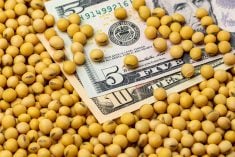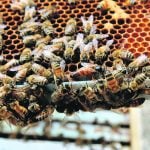Heavier feeder cattle were steady to $2 per hundredweight (cwt) higher last week while calves under 600 pounds were up as much as $2 to $3 in some instances. Despite the softening of the nearby fed market, buying interest for feeders improved as the April and June live cattle futures made fresh contract highs.
A nice level weight group of 110 Charolais-cross age-verified steers averaging just over 500 lbs. sold for $170 landed in southern Alberta. Red and black Simmental-Angus-cross steers averaging 600 lbs. on the Pfizer Gold program sold for $158/cwt in the same region These isolated high-priced sales of quality cattle appear to lead the complex higher week by week. Replacement steers weighing between 800 to 900 lbs. averaged $135 in Saskatchewan and Alberta.
Read Also

China rapeseed meal futures see largest one-day gain in almost three months after Xi–Carney talks
China’s most active Zhengzhou rapeseed (canola) meal futures posted their largest daily gain in nearly three months on Monday, after Canadian Prime Minister Mark Carney and Chinese President Xi Jinping met in South Korea last week without securing a breakthrough on tariffs.
The most important factors influencing feeder cattle prices are the expected price at slaughter and the cost per pound gain. Therefore, as the April and June live cattle futures trade higher, feedlot operators have more confidence paying up for the feeders.
Technically, the April live cattle futures have traded in a narrow range for four months with resistance at $128/cwt. On Monday, this market closed at $128.70/cwt. Whenever a market trades in a range for a long period of time, and then breaks out of the range, there is usually a significant move. We could see another $6 to $8/cwt upside on the deferred live cattle futures which would lift the feeder market by a similar amount.
Barley prices in southern Alberta continue to hover at $210 but values in Morden are closer to $245. I still think barley prices have potential to strengthen an additional $20 to $30 over the winter, which may stem the upside in the feeder prices. However, in the short term, the feeder market is focused on the deferred live cattle futures.
— Jerry Klassen is a commodity market analyst in Winnipeg and maintains an interest in the family feedlot in southern Alberta. He writes an in-depth biweekly commentary, Canadian Feedlot and Cattle Market Analysis, for feedlot operators in Canada. He can be reached by email at [email protected] or at 204-287-8268 for questions or comments.












